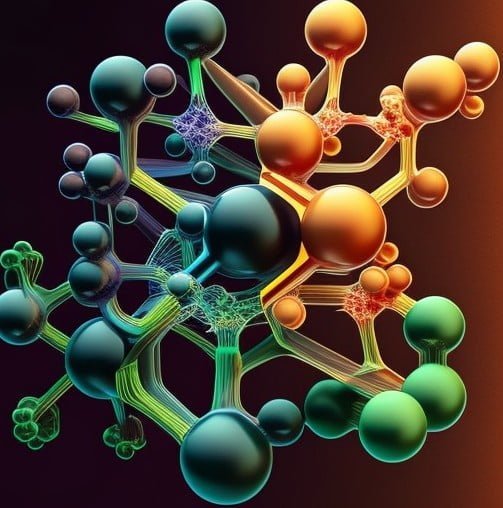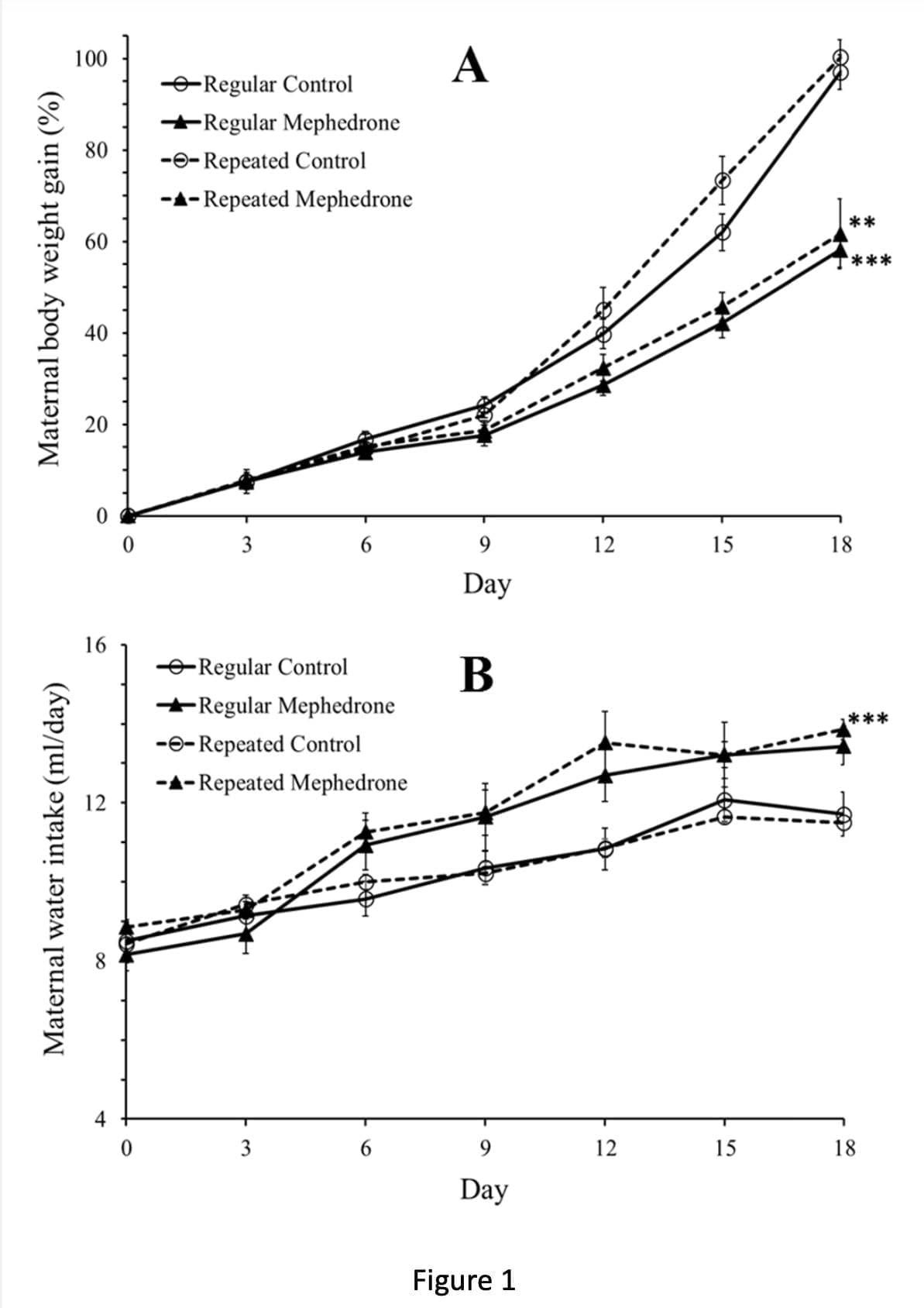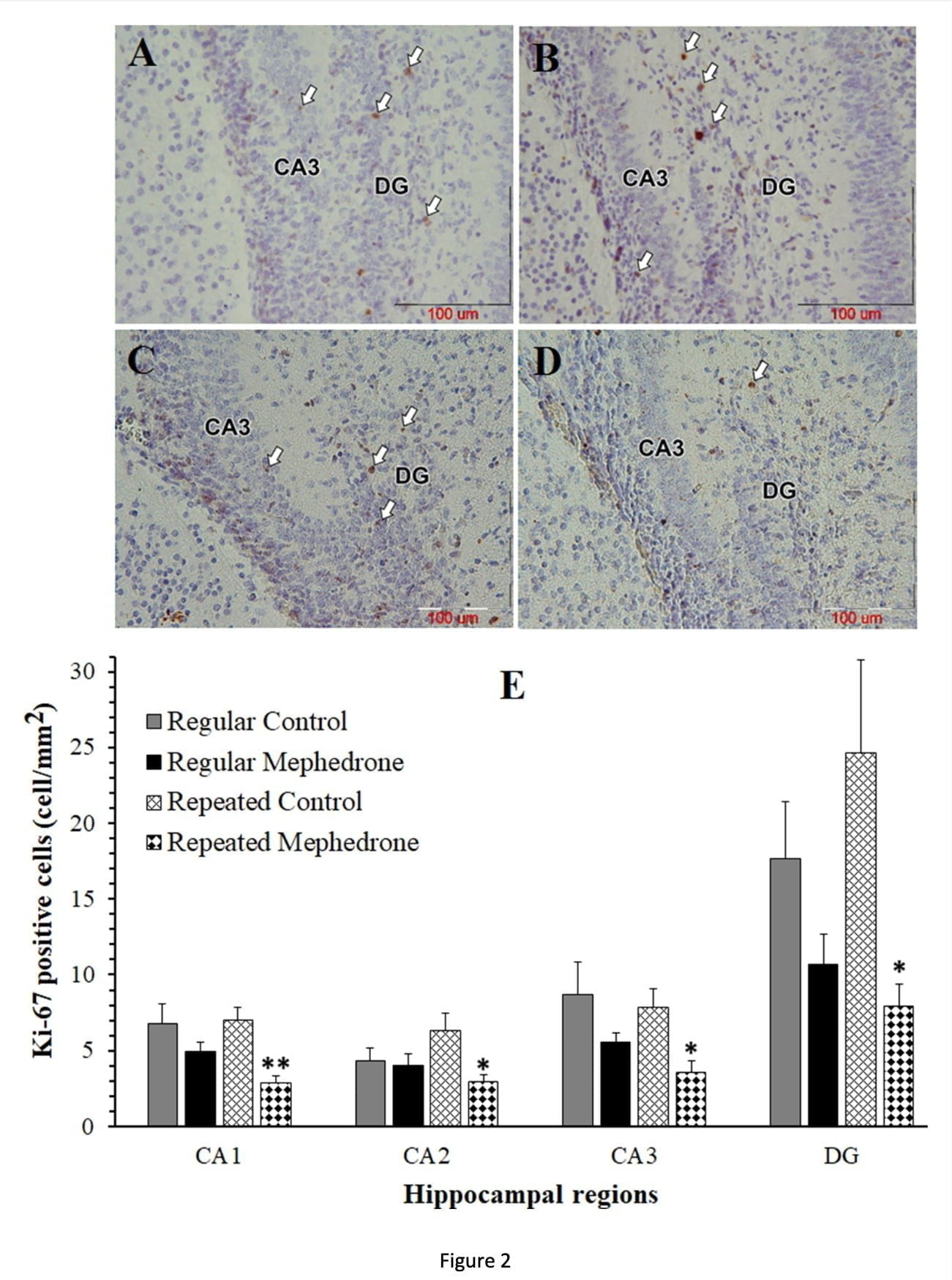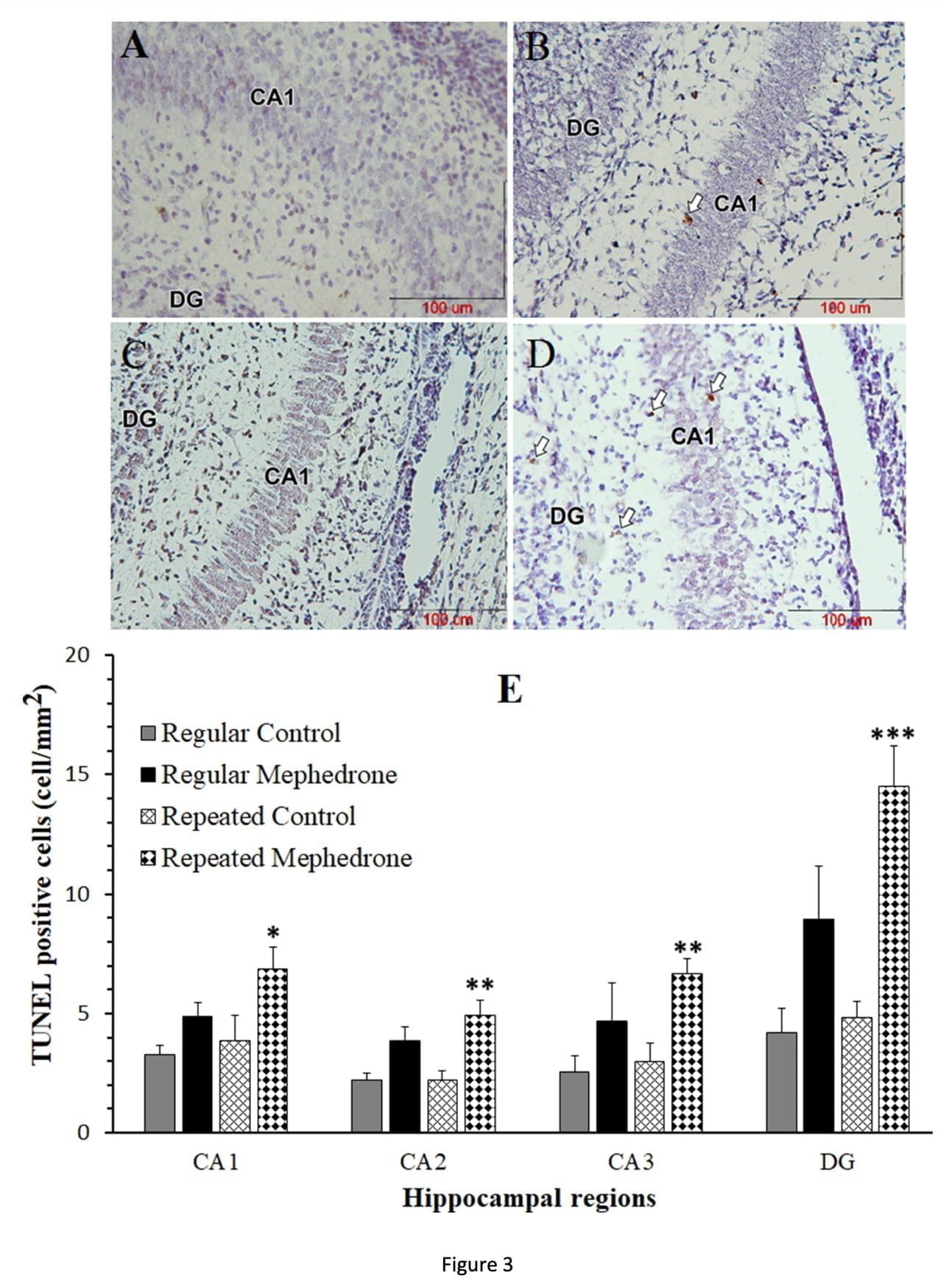
Substance abuse during pregnancy has become an important new public health problem in recent years. Many studies show that street drugs have very devastating and fatal effects on the fetus and the mother. In our recent publications, we have reported that mephedrone exposure can increase the risk of preterm birth, low fetal birth weight, and small head circumference, learning disabilities, and congenital fetal abnormalities. A recent study has shown an increased likelihood of postpartum hemorrhage and placental abruption from chronic long-term mephedrone use. Despite many attempts to preventively and proactively reduce the likelihood of substance use by pregnant women, the increase in such use of mephedrone and other drugs continues to this day. To date, there are only sparse studies on the neurotoxic effects of mephedrone during the gestational period. Recent pharmacokinetic studies have shown that mephedrone can cross the placenta and enter the fetal brain. Also, the results of recent experiments have shown an association between mephedrone use and the development of preterm birth. In our publication, we describe the results of experimental data on the effects of mephedrone during the gestational period on neonatal outcomes, with an emphasis on hippocampal neurotoxicity.
Research Methods and Materials
In our study, we used mephedrone hydrochloride, which was synthesized in the laboratory of organic chemistry using the Lopez-Arnau method. The structure of 4MMC was confirmed by carbon and proton nuclear magnetic resonance spectroscopy. The experiment was performed on pregnant female Balb/C mice. 28 animals were randomly allocated into four groups: one group received 50 mg/kg of mephedrone daily from day 5 to 18 of pregnancy; the control group received saline; the third group received mephedrone three times daily subcutaneously with an interval of two hours; the fourth group of animals studied received three times daily saline. Regular and repeated regimens were used to simulate regular and recreational use of 4mmc. And the interval of two hours was chosen because of a certain half-life of mephedrone, which is just about two hours (simulation of mephedrone boosting). For laboratory identification, we performed immunohistochemistry and TUNEL. For this purpose, brain sections were deparaffinized with xylene, followed by rehydration in graded ethanol followed by heating in PBS/EDTA solution to extract the antigen. After various methods, the sections were washed in PBS, H2O2, and DAB, followed by running water. Finally, the sections were contrasted with Harris hematoxylin solution, then dehydrated in ethanol in increasing degrees of purification and mounted on coverslips.

Using the Morris water maze technique, the spatial learning and memory of mice (60 days old) born from treated litters were examined. Water (23–25 C) was poured into a circular pool with a 136 cm diameter and a 60 cm high, filling it to a depth of 28.5 cm. The pool was divided into four quadrants, which were labeled as north (N), south (S), east (E), and west (W). In the center of the northeastern quadrant of the pool, a 10-cm-diameter escape platform was positioned and lowered to a depth of 0.5 cm below the water’s surface. A mouse was directed to the platform by the examiner and given 20 seconds to find it if it had not done so after 60 seconds had passed. The mouse was taken out when the fourth trial was finished, dried, and put in its holding container. A video tracking system kept track of the swimming path’s length and the lag time to locate the platform. The platform was taken away on the sixth day (also known as the probe day), and the mice were permitted to swim for 60 seconds to test their reference memory. Each animal’s time spent in the target quadrant was noted, and group differences were examined.
The results of the experiment and their discussion
Since several previous studies have reported on the potential neurotoxic effects of mephedrone in adolescent rodents, the purpose of the present experiment is to evaluate the effects of gestational mephedrone use on neonatal outcomes, with a focus on hippocampal damage. According to the current study’s findings, this medication harms newborn puppies by increasing the likelihood of stillbirth, lowering birth weight, reducing hippocampus neurogenesis, and impairing learning and memory abilities. Both mephedrone groups increased water intake in the pregnant mice, which is consistent with clinical research showing that khat plant or its cathinone derivative users suffer thirst and dry mouth. In pregnant mice, mephedrone also slowed the rate of weight growth, which might be due to a rise in metabolism or a decrease in hunger. Because we did not track the mice’s food intake while they were pregnant, this study may have some limitations. However, earlier clinical research on mephedrone users found that both young and older users had lower appetites. Teenage rodents given mephedrone reportedly acquired weight more slowly than control rats, which is in line with our findings. Additionally, it was shown that frequent exposure to mephedrone reduced the adolescent rats’ ability to gain weight temporarily. Both mephedrone-treated groups’ newborns had low birth weights in addition to the pregnant mice, showing that the substance had an adverse effect on fetuses’ intrauterine growth. It has been established that babies born to moms who regularly or infrequently smoked khat had considerably lower birth weights, which is consistent with the results of the current study.

A long time ago, studies by Yamamoto revealed the embryotoxic and teratogenic effects of cathinones and methamphetamine. In our work, we found that regular and repeated exposure to mephedrone leads to an increased rate of stillbirths. Such a result confirms the importance of early screening for mephedrone abuse during pregnancy. By immunohistochemical analysis and TUNEL analysis, we found that mephedrone suppresses cell proliferation and induces apoptosis in the developing hippocampus in neonates. In 2014, Martínez-Clemente conducted a series of in vivo experiments where he analyzed the degree of mephedrone’s inhibitory effect on neuronal cell viability. The conclusion was that in cultured cortical neurons, mephedrone reduced their viability in a concentration-dependent manner. In addition to the above results, the effect of the structural analogue 4mmc (3-fluoromethcathinone), which caused cell cycle arrest in the G0/G1 phase in mouse hippocampal cells, was also determined. Thus, the antiproliferative and proapoptotic effects of mephedrone are related to oxidative stress, which is also confirmed by a 2014 study where mephedrone at a dose of 25 mg/kg led to astrogliosis and loss of serotonergic hippocampal neural markers. Both repeated and single use of mephedrone leads to lipid peroxidation in the cerebral cortex and hippocampus. In general, oxidative stress plays a key role in the molecular neurotoxicity of any psychostimulant, especially mephedrone, MDMA, and amphetamines. Increased reactive oxygen species can activate mitochondria-dependent pathways of apoptosis, in which losing the balance between pro- and anti-apoptotic proteins ultimately results in the release of mitochondrial apoptogenic elements that induce apoptosis in caspase-dependent or independent mechanisms.

Summarizing the available data, it can be unequivocally stated that the negative effects of mephedrone abuse during pregnancy may persist for a long time even after delivery. This long-term toxicity is the result of the antiproliferative and proapoptotic effects of mephedrone on the hippocampus. Exposure to mephedrone during the gestational period multiplies the risk of low fetal weight and stillbirth, and significantly impairs learning and memory by damaging the hippocampus. Our publication aims to raise awareness in the scientific community about the importance of preventive interventions to reduce the harms of mephedrone, as well as other psychoactive substances. There is a need to increase knowledge about the neurotoxicity of cathinones and to search for possible pharmacological solutions to this problem.
